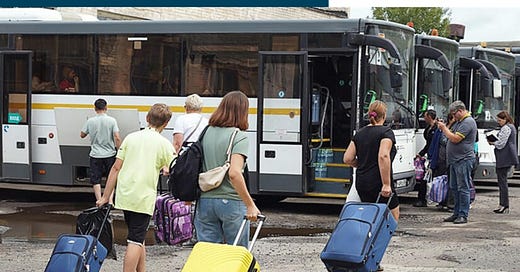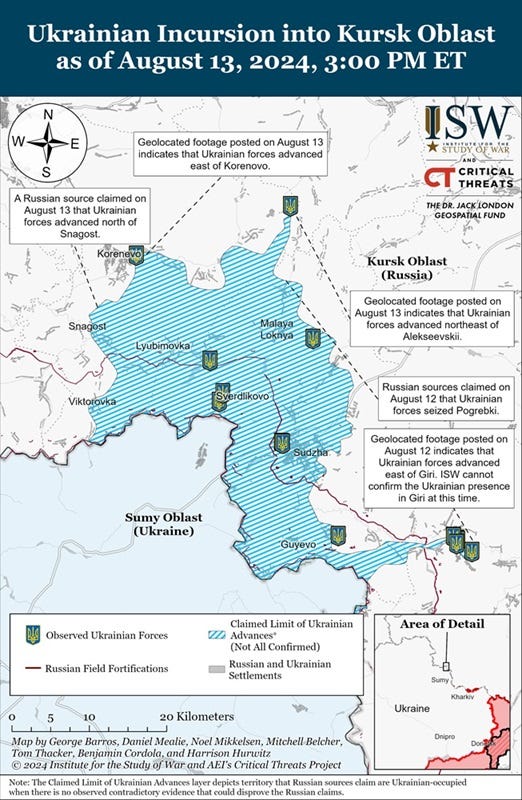For those familiar with the military history of World War Two, the Battle of Kursk holds special significance. While the German Army sustained a heavy defeat in the Battle of Stalingrad (July 1942-February 1943), which represented the psychological turning point of the war on the Eastern Front, it was at Kursk that the military turning point of the Nazi-Soviet War was reached.
After the Stalingrad disaster, which destroyed an entire field army, the German Army launched a crash program to replace its losses and ready its forces for the 1943 summer campaign. Germany‘s leading armored warfare expert, Colonel-General Heinz Guderian, was appointed Inspector-General of Panzer Troops, with broad authority from Hitler to refurbish the Army’s badly battered mechanized divisions. In tandem with this effort, plans were laid for a summer offensive to stabilize the situation on the Eastern Front.
Hitler and his generals realized that the days of sweeping, broad-front offensives were over. They would now have to choose their objectives carefully, and their gaze soon fell on the Kursk salient, centered on the city of that name, 160 miles wide and 90 miles deep, bulging westward. The German offensive, christened Operation Citadel, was designed to pinch off the Kursk salient and destroy the enemy forces concentrated there, preempting the Red Army’s anticipated summer offensive.
Operation Citadel was launched on 5 July 1943, resulting in the largest land battle ever fought before or since. Both sides sustained extraordinarily high casualties before Hitler called off the operation due to the Allied invasion of Sicily. The initiative was thus ceded to the Red Army, which was never to relinquish it. Germany’s final bid for victory in the East had instead resulted in a decisive defeat.
The current Ukrainian offensive into the Kursk Oblast recalls the original Battle of Kursk in some of its aspects. Though the Ukrainian command has made no formal statement of its objectives it seems reasonable to conclude that among them is a bid to regain the initiative by carrying the war onto Russian soil. Since the turn of the year, the Russian Army has maintained the initiative, exploiting its numerical superiority to make slow but steady progress against a debilitated Ukrainian defense in the Donbas sector.
At this stage of the Russo-Ukrainian War, a strategy of attrition, however costly, is Russia’s surest path to victory. Or to put it another way, the Ukrainians cannot win by standing on the defensive and allowing their army to be ground down. That they realize this is shown by the Ukrainian command’s bold decision to launch the Kursk offensive. Russia’s principal advantage is numerical superiority—which can only be negated by taking the fight to the enemy. If the war is to be terminated on terms favorable to Ukraine, Russia must suffer a significant military defeat.
Clearly, the Russian command was caught off guard by the Ukrainian offensive. It no doubt expected the Ukrainians to commit such reserves as they possessed to the defensive battle in the Donbas sector. But instead, those reserves were committed farther north, striking a soft spot in the Russian line and achieving a significant penetration. Though the Russian front in the Kursk Oblast is covered by field fortifications, the forces manning them were second rate: Border Guard and National Guard troops, Army units made up largely of conscripts, with insufficient artillery and armor support. The size of the Ukrainian strike force is not known, but probably it consists of four to six mechanized brigades.
The Ukrainian Kursk offensive places the Russians in a sticky situation. It seems unlikely that they can repel the Ukrainian incursion with the forces now on the spot. From the strictly military point of view, it might be best for the Russians to fight a delaying action in Kursk while continuing to press forward in the Donbas. But here the prestige factor intervenes. The Ukrainian invasion struck in the area of a great World War Two victory. The attackers rapidly overran the frontier defenses, took numerous prisoners, and caused a large-scale evacuation of Russian civilians. The Russian command had either failed to spot the enemy buildup or simply disregarded it. Once again, Russian military competency has been called into question. For V. Putin & Co. these developments are painfully embarrassing.
Political considerations, therefore, may compel Putin to commit significant forces to the Kursk Oblast, with the objective of launching a counteroffensive to drive the Ukrainians out. And that could result in a battlefield showdown reminiscent of the original Battle of Kursk. Whether the Ukrainians are thinking along such lines is an unanswerable question at this point. Ukrainian President Volodymyr Zelensky and other senior Ukrainian officials have said only that Ukraine has no long-term designs on Russian territory and that the Kursk offensive is a security measure.
On 12 August, V. Putin tapped a key presidential aide, Alexei Dyumin, to supervise the “counterterrorist” operation in the Kursk Oblast. Dyumin’s appointment has given rise to rumors that Putin is displeased with the security forces’ response to the Ukrainian offensive and is contemplating a command reshuffle. It’s been rumored for some time that Dyumin, a close crony of the Russian president, will replace Andrey Belousov as defense minister; the Kursk appointment might therefore be the prelude to big changes. In June, Putin sacked four deputy defense ministers on charges of nepotism and corruption—a clear sign of his dissatisfaction with the management of the Ministry of Defense.
As of 13 August, Ukrainian forces in the Kursk sector were still advancing, while Russian sources say that various irregular and volunteer units have been or are being transferred from the Donbas to Kursk, and that other forces, including VDV (airborne) and Spetsnaz (special forces) units, are being transferred to Kursk from the Kharkiv sector. So far, however, no major Russian Army units engaged in the Donbas have been pulled out of combat. If Ukrainian forces in Kursk continue to gain ground, however, that may change.
The next week to ten days will determine either that the Ukrainian Kursk offensive is merely an incident in a long conflict, or that the Russo-Ukrainian War has arrived at its turning point.
See here for the latest Ukraine updates from the Institute for the Study of War.





Nice explanation of Citadel for the general public. I wish this was knowledge that more people had at the ready. I recall that there was a Soviet intelligence operation that allowed them to commit massive effort in preparation for Citadel. Some of your readers might benefit if you share some on that.
In what way/s is the latest Ukrainian incursion into Russian territory different from the raids performed earlier in the year? Granted those were apparently designed to probe Russian defenses and gauge the strength and timing of their reactions, but Ukraine has stated they are not planning to hold territory they have occupied. So what is the purpose of the latest incursion? Surely the RU forces will eventually decide to counterattack and use superior numbers of conscripts, missiles & glide bombs & armor to push UKR forces back across the border. What strategic purpose would that serve other than to demoralize civilians and create some unhappiness in the Kremlin?